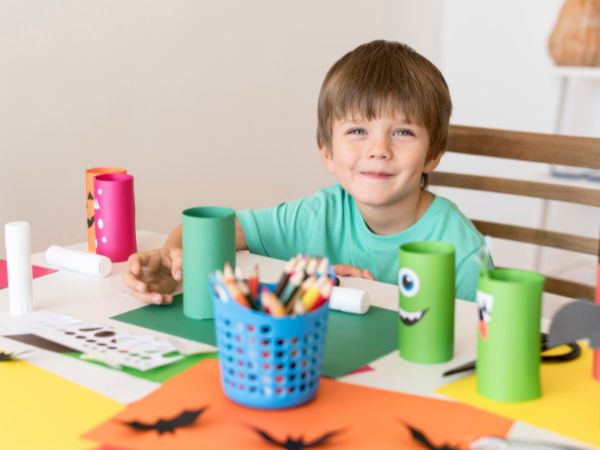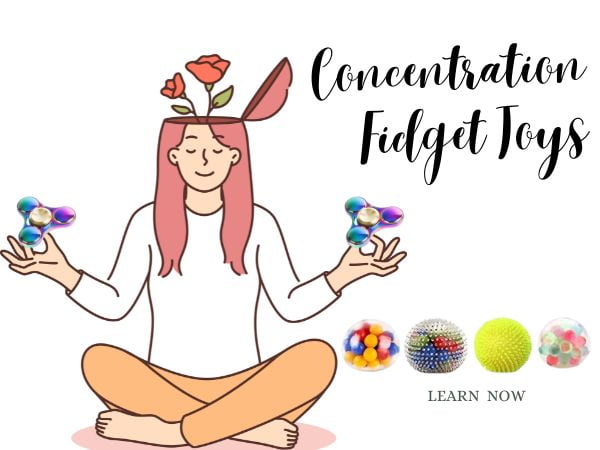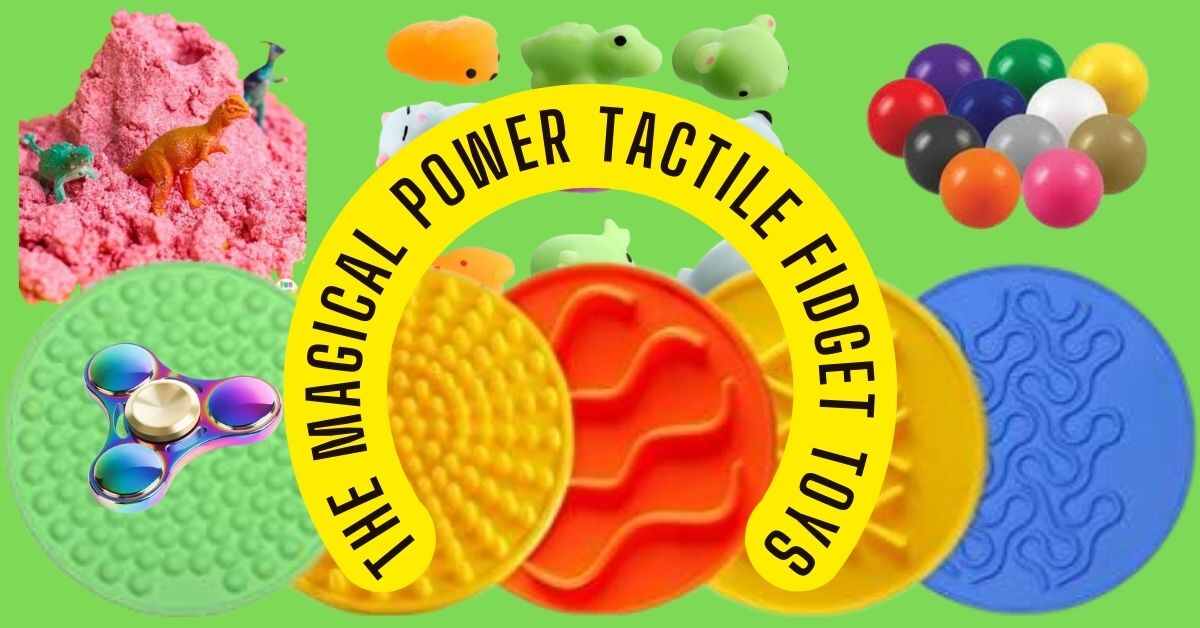1. Introduction
In a bustling classroom, children with ADHD often find it challenging to maintain focus. The constant whirlwind of thoughts can hinder their learning experience. This is where fidget toys come into play, providing a constructive outlet for excess energy while enhancing concentration. In this article, we will explore the benefits of fidget toys for school ADHD and offer recommendations on selecting the most suitable options.
Table of Contents
1.1 In a bustling classroom, children with ADHD often find it challenging to maintain focus.
Imagine a room full of kids, each with their own thoughts and energy levels. For children with ADHD, it can be like trying to catch a butterfly in a storm – their minds are constantly on the move.
1.2 The constant whirlwind of thoughts can hinder their learning experience.
Their minds are like whirlwinds, swirling with thoughts and ideas. This can make it difficult for them to concentrate on what the teacher is saying or the lesson at hand.
1.3 This is where fidget toys come into play, providing a constructive outlet for excess energy while enhancing concentration.
Fidget toys are like secret weapons for these kids. They give them a way to channel all that extra energy positively and productively. It’s like giving them a little something to do with their hands, so their minds can focus better.
2. Understanding ADHD and its Classroom Impact
2.1 Defining ADHD
ADHD stands for Attention Deficit Hyperactivity Disorder. It’s a condition that affects how a person’s brain works. People with ADHD might find it harder to focus, sit still, or control their impulses.

Person with ADHD
2.2 Challenges in a Traditional Classroom Setting
In a typical classroom, where everyone is expected to sit still and pay attention, children with ADHD face extra challenges. It’s like asking a bird to swim – it’s just not their natural way of doing things.
3. The Science Behind Fidget Toys

A. Sensory Stimulation and Cognitive Engagement
How Fidget Toys Provide Sensory Input: Fidget toys offer various textures and movements that stimulate the senses. This sensory input can help the brain focus better.
Enhancing Cognitive Functions through Stimulation: We’ll explore how this sensory engagement translates to improved cognitive functions, such as memory retention and problem-solving skills.
B. Stress Reduction and Anxiety Management
Fidget Toys as Stress-Busters: Fidget toys, like stress balls, provide a physical outlet for excess energy and tension. They’re like little stress-relief tools that can be incredibly effective.
Alleviating Anxiety with Fidget Toys: Anxiety often accompanies ADHD. We’ll discuss how fidget toys can offer a sense of calm and security, helping students manage their anxiety levels.
4. Types of Fidget Toys for School ADHD and Their Benefits
Choosing the right fidget toys for school for a student with ADHD can be important for providing a helpful outlet for excess energy or restlessness. Here are some types of fidget toys that are often considered suitable for school:
1. Fidget Spinners(if allowed):
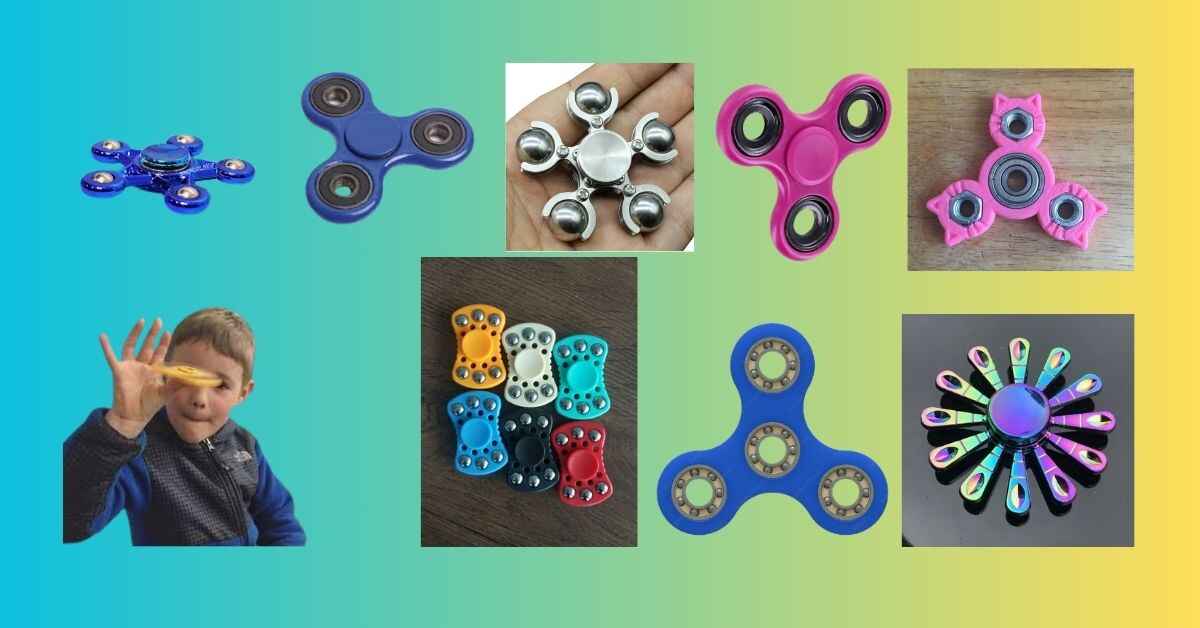
Mechanics and Functionality: Fidget spinners are small gadgets that can be spun between the fingers. They’re like miniature stress relievers, providing a satisfying motion.
Effectiveness in ADHD Management: We’ll delve into how fidget spinners, with their simple yet engaging design, can significantly benefit students with ADHD.
2. Tangle Toys

Flexibility and Textural Exploration: Tangle toys are like puzzles that can be twisted and turned. They provide a unique tactile experience, offering both mental and physical engagement.
Tangle Toys: A Silent Solution: Unlike some fidget toys, tangle toys are quiet and won’t disrupt the classroom environment, making them a great option for students.
3. Stress Balls

The Squishy Stress Relievers: Stress balls are soft and squishy, perfect for squeezing. They offer a physical release for pent-up energy and tension, promoting a sense of calm.
Fine Motor Skill Enhancement: Besides stress relief, stress balls can also improve fine motor skills, which is an added bonus for students’ overall development.
4. Chewable Jewelry
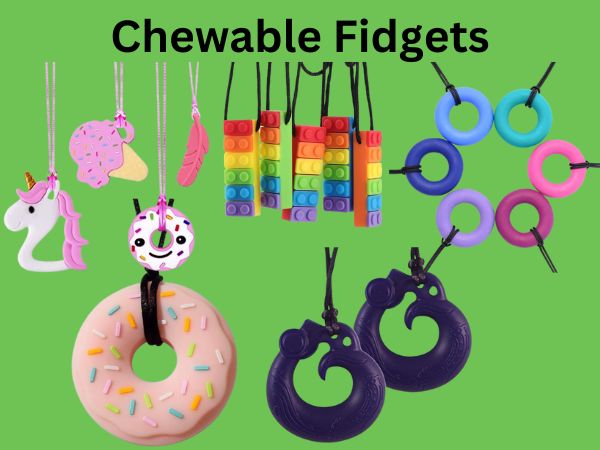
Oral Stimulation for Focus: Chewable jewelry serves a dual purpose – it provides oral stimulation, which can be incredibly helpful for maintaining focus in class.
Safety and Durability Considerations: We’ll discuss the importance of choosing chewable jewelry that’s safe, durable, and appropriate for the child’s age.
5. Quiet Fidgets:

Fidget Rings
- Fidget Rings: These are small rings that can be worn on the finger and twisted or spun.
- Fidget Cubes: These small cubes have different sides with buttons, switches, and rollers for various types of fidgeting.

Fidget Cube
6. Tactile Fidgets:
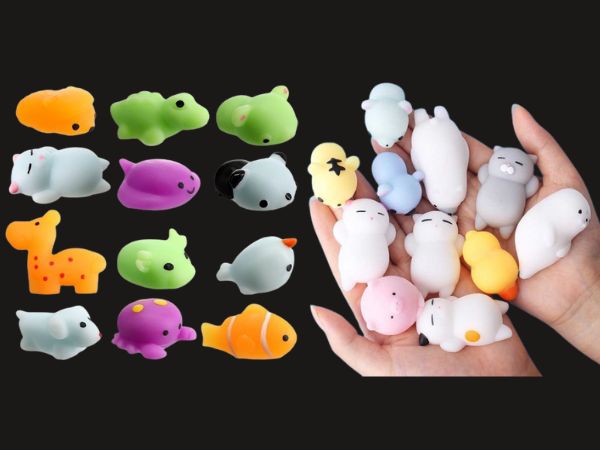
Squishy Toys
- Squishy Toys: These can be squeezed or manipulated in the hand, providing a tactile outlet for restlessness.
- Texture Balls: Balls with different textures can provide sensory input for students who benefit from tactile stimulation.

Texture Balls
7. Sensory Bands or Bracelets:

- These are worn around the wrist and can be stretched, twisted, or manipulated for sensory input.
8. Resistance Bands or Tubes:
- These can be discreetly used under a desk or table for students who benefit from physical movement.

9. Putty or Play-Doh:
- Having a small container of putty or Play-Doh can provide a tactile outlet. It can be discreetly used under a desk.
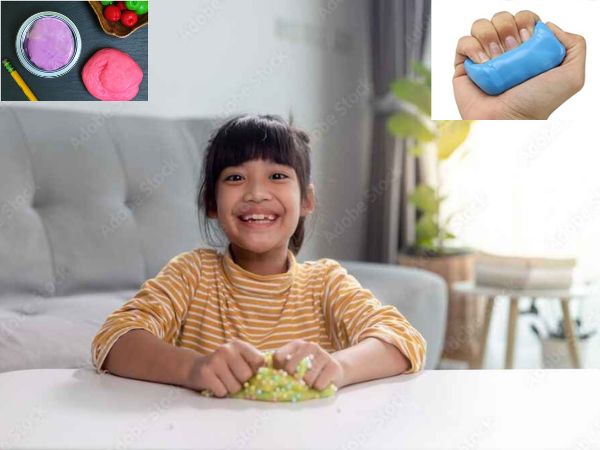
5. Choosing the Right Fidget Toy for School ADHD
A. Personal Preferences Matter
Tailoring Choices to Individual Needs: Just like any tool, what works for one person might not work for another. It’s crucial to consider the child’s personal preferences and tendencies.
Finding the Perfect Match: This section will offer tips on how to observe and understand what type of fidget toy would be most effective for a particular student.
B. Professional Guidance and Recommendations
Consulting Teachers and Therapists: Teachers and therapists who are familiar with the child’s needs can offer valuable insights and recommendations for the most suitable fidget toy.
Expert Advice on Fidget Toy Selection: We’ll emphasize the importance of seeking expert opinions to ensure the chosen fidget toy aligns with the child’s specific requirements.
C. Safety First: Materials and Durability
Ensuring Child-Friendly Materials: This section will guide on selecting fidget toys made from safe and non-toxic materials to ensure the child’s safety.
Durability for Long-Term Use: We’ll highlight the importance of choosing fidget toys that are durable and able to withstand regular use, providing long-term benefits.
D. Assessing Effectiveness and Suitability
Monitoring Impact on Focus and Attention: This part will guide parents and educators on how to assess the effectiveness of the chosen fidget toy in improving the child’s focus and attention span.
Adapting Choices as Needs Evolve: We’ll discuss how it’s essential to be flexible and open to trying different fidget toys as the child’s needs and preferences may change over time.
6. Integrating Fidget Toys into the Learning Environment
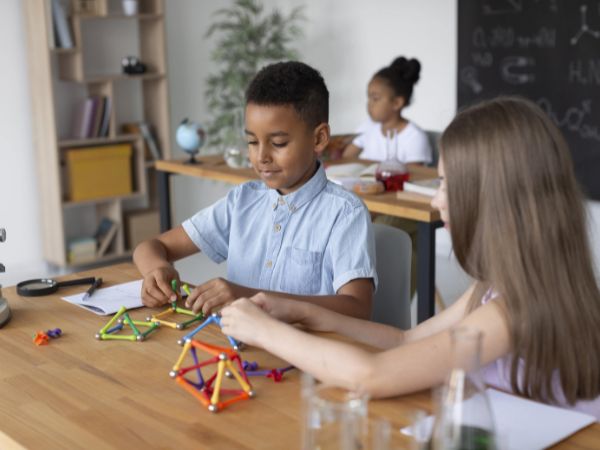
A. Open Communication with Educators
Advocating for Fidget Toy Use: This section will guide parents and guardians on how to communicate with teachers about the benefits of fidget toys and their potential positive impact on the child’s learning experience.
Addressing Concerns and Misconceptions: We’ll provide tips on how to address any concerns or misunderstandings that teachers may have about the use of fidget toys in the classroom.
B. Designating Fidget-Friendly Zones
Creating Supportive Environments: This part will discuss the importance of creating spaces within the classroom where the child can comfortably and discreetly use their fidget toy without causing disruption.
Establishing Spaces for Focus Enhancement: We’ll explore how designating specific areas for fidget toy use can enhance the child’s ability to focus and engage in learning activities.
7. Success Stories and Testimonials
A. Parents’ Perspectives
Real-Life Experiences with Fidget Toys: Here, we’ll share anecdotes and experiences from parents who have witnessed the positive impact of fidget toys on their children’s academic performance and overall well-being.
Impact on Academic Performance: This section will highlight specific instances where fidget toys have contributed to improved academic outcomes for students with ADHD.
B. Educators’ Insights
Observations and Benefits in the Classroom: We’ll feature insights from educators who have observed the positive effects of fidget toys on students’ behavior, engagement, and learning in a classroom setting.
Fidget Toys as Tools for Inclusive Education: This part will emphasize how fidget toys can be valuable tools for creating an inclusive learning environment that caters to the diverse needs of all students.
8. Addressing Concerns and Misconceptions
A. Potential Distractions or Genuine Aids
Dispelling Myths about Fidget Toys: We’ll debunk common misconceptions about fidget toys, emphasizing their role as aids in enhancing focus and attention rather than distractions.
Focusing on the Positives: This section will reiterate the benefits of fidget toys and how they can be harnessed as effective tools for managing ADHD symptoms.
B. Promoting Acceptance and Understanding
Encouraging Empathy and Support: We’ll discuss the importance of fostering a supportive and understanding environment where both students and educators recognize the value of fidget toys.
Shaping Inclusive Learning Environments: This part will emphasize how embracing fidget toys contributes to creating an inclusive educational setting that caters to the diverse needs of all students.
9. Beyond the Classroom: Fidget Toys at Home
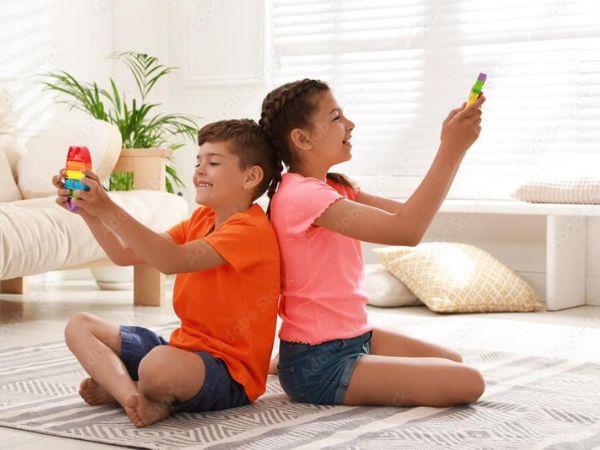
A. Transitioning from School to Home Environment
Consistency in Fidget Toy Use: We’ll discuss the importance of maintaining a consistent approach to fidget toy usage at home, ensuring that the benefits continue outside the classroom.
Extending Benefits to Homework and Study Time: This section will explore how fidget toys can be incorporated into the child’s study routine to improve concentration and productivity during homework and assignments.
B. Fidget Toys as Tools for Relaxation
Unwinding and Calming Techniques: Fidget toys aren’t just for schoolwork. They can also serve as valuable tools for relaxation and stress relief, helping the child unwind after a long day.
Creating Relaxation Routines: We’ll provide tips on how to establish relaxation routines that involve fidget toys, promoting a sense of calm and well-being.
10. Where to Buy Fidget Toys for School ADHD?
You can buy fidget toys for school or ADHD from a variety of sources, both online and in physical stores. Here are some options to consider:
- Online Retailers:
- Amazon: Amazon offers a wide selection of fidget toys, including spinners, stress balls, sensory rings, and more.
- Etsy: Etsy often has a unique selection of handmade or specialty fidget toys that may cater to specific preferences or sensory needs.
- eBay: You can find both new and used fidget toys on eBay, often at a range of price points.
- Walmart.com, Target.com, and other large retailers often have dedicated sections for fidget toys.
- Specialty Stores:
- Educational Supply Stores: Some stores that specialize in educational materials may carry fidget toys, especially those designed for classroom use.
- Toy Stores: Specialty toy stores often have a variety of fidget toys for different age groups.
- Therapeutic and Specialty Shops:
- Stores that focus on sensory or therapeutic products often have a range of fidget toys designed for individuals with ADHD or sensory processing needs.
- Local Markets and Craft Fairs:
- Sometimes, local artisans create unique fidget toys that may not be available through larger retailers.
11. FAQs on Fidget Toys for School ADHD
Q. 1. Can fidget toys be used by all children, or are they specifically designed for those with ADHD?
Ans: Fidget toys can be beneficial for various individuals, not just those with ADHD. They can aid in improving focus and reducing stress for a wide range of users.
Q. 2. Are fidget toys a distraction in the classroom?
Ans: When used appropriately and with guidance, fidget toys can enhance focus and attention rather than serve as distractions.
Q. 3. How can I ensure my child’s teacher is comfortable with them using fidget toys in the classroom?
Ans: Open communication with the teacher is crucial. Discuss the benefits and potential strategies for incorporating fidget toys into the learning environment.
Q. 4. What are some signs that a particular fidget toy is not suitable for my child?
Ans: If a fidget toy seems to draw excessive attention or is causing discomfort, it might not be the right fit. It’s essential to explore different options.
Q. 5. Where can I find a variety of fidget toys to choose from?
Ans: There are various online retailers and specialized stores that offer a wide range of fidget toys. It’s recommended to explore options and read reviews before making a selection.
Q. 6. How do fidget toys help children with ADHD in a classroom setting?
Ans: Fidget toys help children with ADHD in a classroom by providing a tactile outlet for excess energy or restlessness. Manipulating these toys can enhance concentration and improve overall classroom engagement for students with ADHD.
Q. 7. Can fidget toys replace other forms of therapy or treatment for ADHD?
Ans: Fidget toys can be a helpful tool for some individuals with ADHD, but they are not a replacement for other forms of therapy or treatment.
12. Conclusion
In the dynamic landscape of education, it’s imperative to recognize and address the unique needs of every child. Fidget toys, with their simple yet effective design, have emerged as valuable tools for children with ADHD. By offering a means to channel excess energy, they facilitate improved focus and learning experiences in the classroom.


